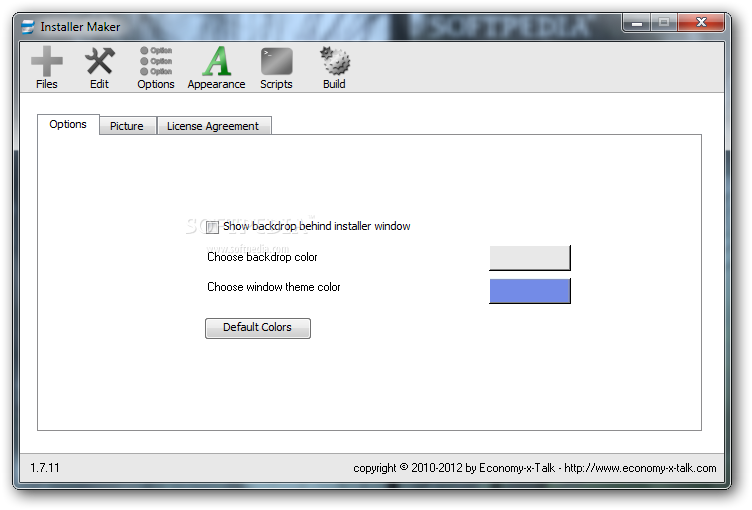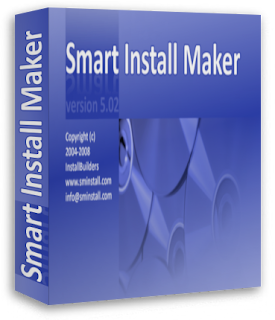

Here you can also set the main directory of your installation, which is where all of the files pertaining to the installer will be stored after the installation, such as the uninstaller, as well as the custom product icon, the license agreement, and the website link-should you choose to include them. On the second page of the Installer Maker you can add a custom product icon, a custom install icon, and custom uninstall icon by enabling the appropriate checkbox and typing in or pasting the location of the icon you wish to set or by browsing to it by using the `browse button` next to the field instead. Once you are done entering your information on the first page, press on the “Next >” button to continue to the second page. On the first page you can also set your Application Name, Application Version, Application Publisher, and Application Website (the inclusion of the Application Website being optional to continue with the generation procedure). If you leave this checkbox checked on, then the generated installer will automatically register your Excel workbook add-in during the installation process. If the added file is considered to be a valid Excel add-in file (such as a file with the `.xla` or `.xlam` extension), then you will see the following checkbox appear: So, we recommend that you install the compiled EXE file into the “MyDocuments” folder or any of its sub-folders. In the latest versions of MS Windows the “Program Files” folder and its sub-folders have special (restricted) permissions to write or overwrite files for users without administrator credentials. The contained data may be changed and all changes are saved in the EXE file resources, so the place where the EXE file will be installed should allow you to overwrite the EXE. Please note that workbook protected with DoneEx XCell Compiler is the EXE file which contains as run-time calculation engine as data. To add one file you can click on the add file button to add a file:Ĭlicking on this button will bring up a window which will allow you to add your compiled workbook file to the installer, along with the ability to set its `Destination Directory` as well as setting what the installer does if the file already exists by using the `If file exists` drop down menu selection: On this page you need to select files you want to distribute with your installer. Once you have successfully downloaded, installed, and launched the DoneEx Installer Maker you will get the first page. Once you have completed the first step, you can download the Installer Maker free tool to get started with creating an installer for your protected workbook!


Installer maker how to#
Once you have protected your workbook from being copied, you can continue by making an installer for your workbook.Ĥ steps description – how to make installer for Excel workbook You can even use both for maximum protection! If you want to distribute Excel add-ins (files with the `.xla` or `.xlam` extension) then we recommend that you protect them with ‘VbaCompiler for Excel’, which not only provides unbreakable VBA protection but also may improve the performance of VBA algorithms after compilation. To protect your Excel files from being copied we highly recommend that you use either the DoneEx Excel Compiler, or that you use the DoneEx VbaCompiler for Excel if you want to protect your VBA code with only the best VBA code protection. Since the original Excel workbook protection is weak and cannot appropriately protected from being copied and used by others without your permission by Excel alone, we recommend that you apply strong and reliable protection to your Excel workbooks or your Excel add-ins that you want to distribute. How to Create Installer for Excel Workbook or Excel Add-inīefore you get to the answer of the question of “How to create installer for Excel workbook or Excel Add-in” you need to be sure that your Excel workbook is copy protected and cannot be pirated.


 0 kommentar(er)
0 kommentar(er)
